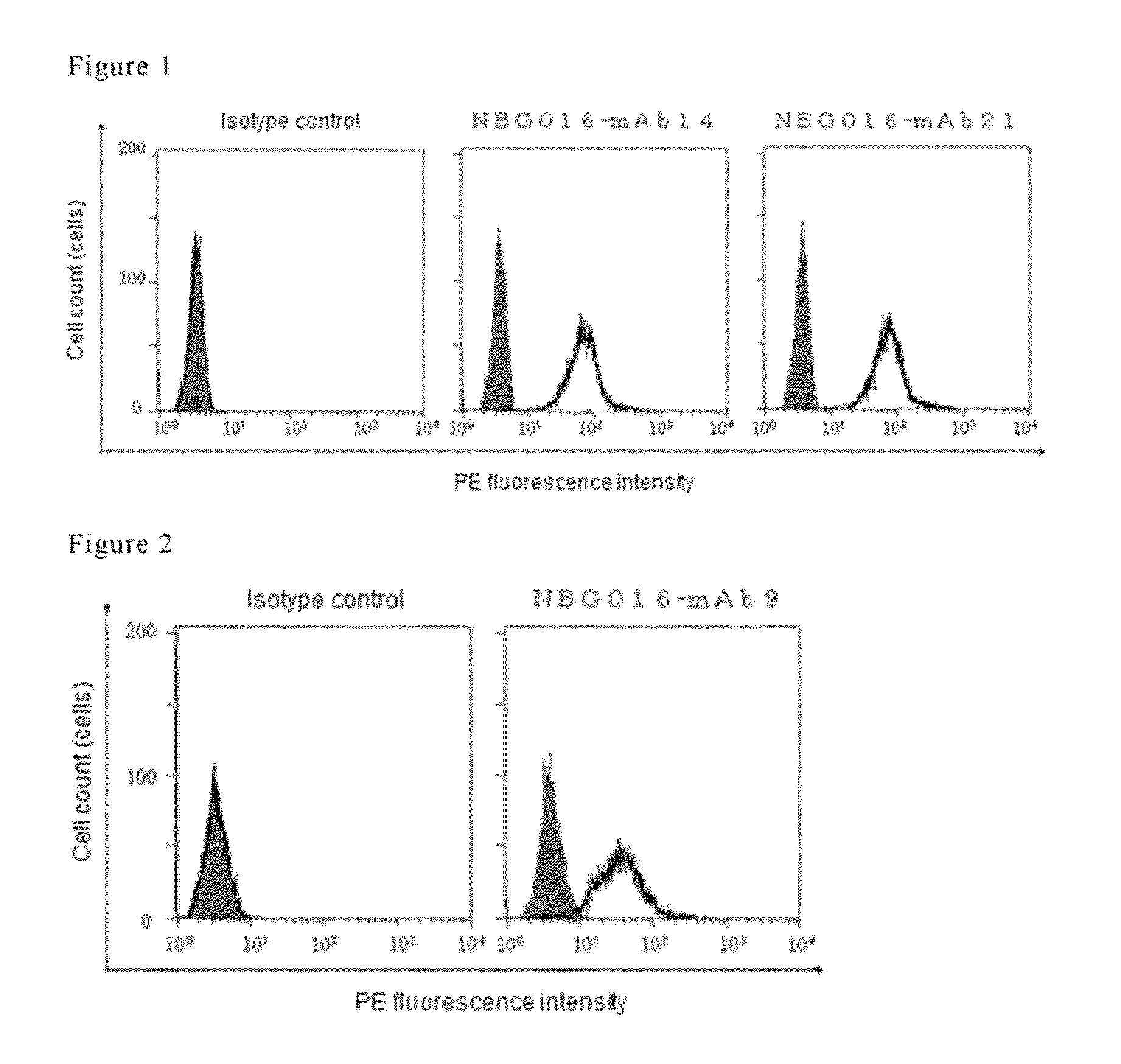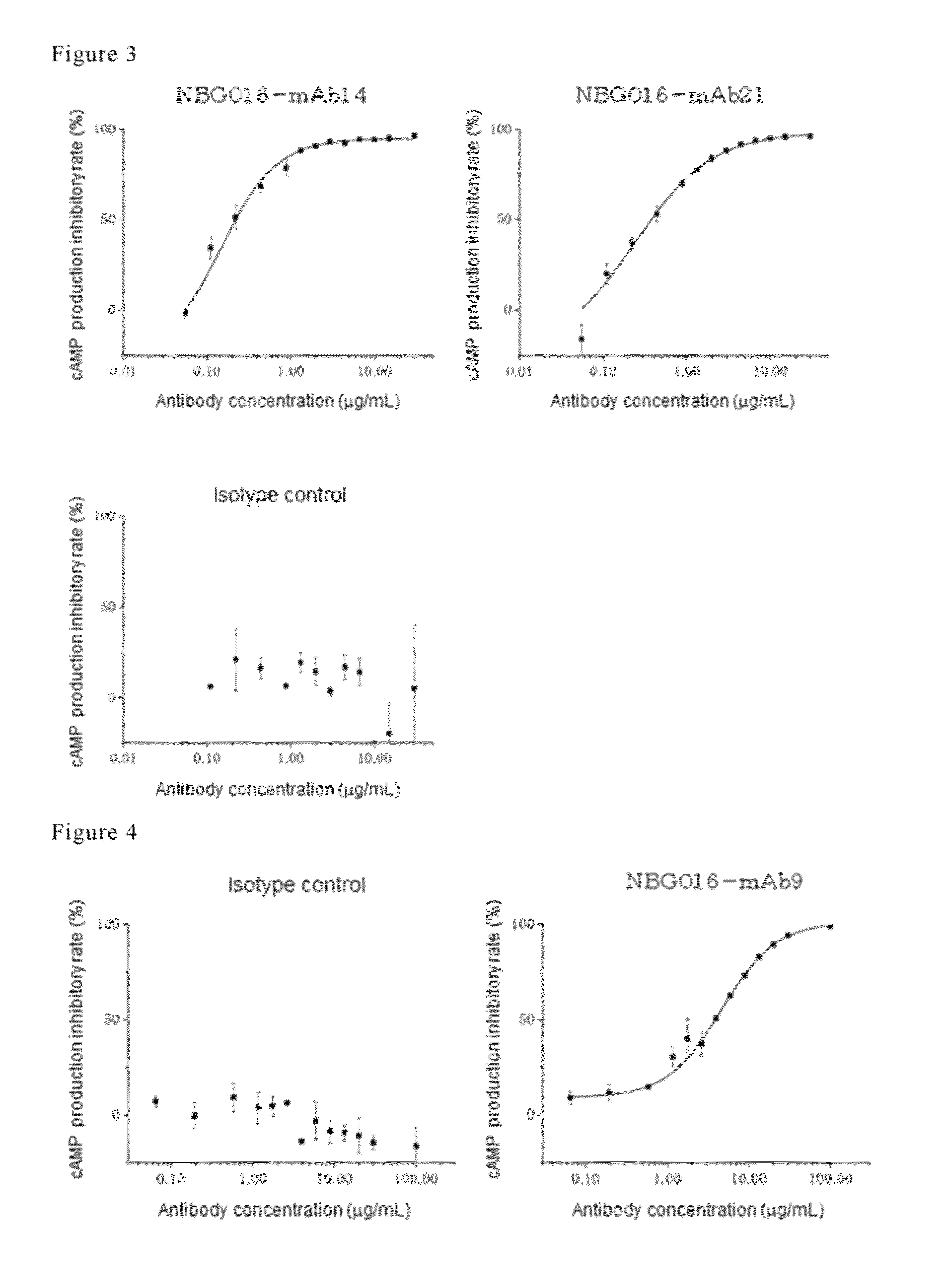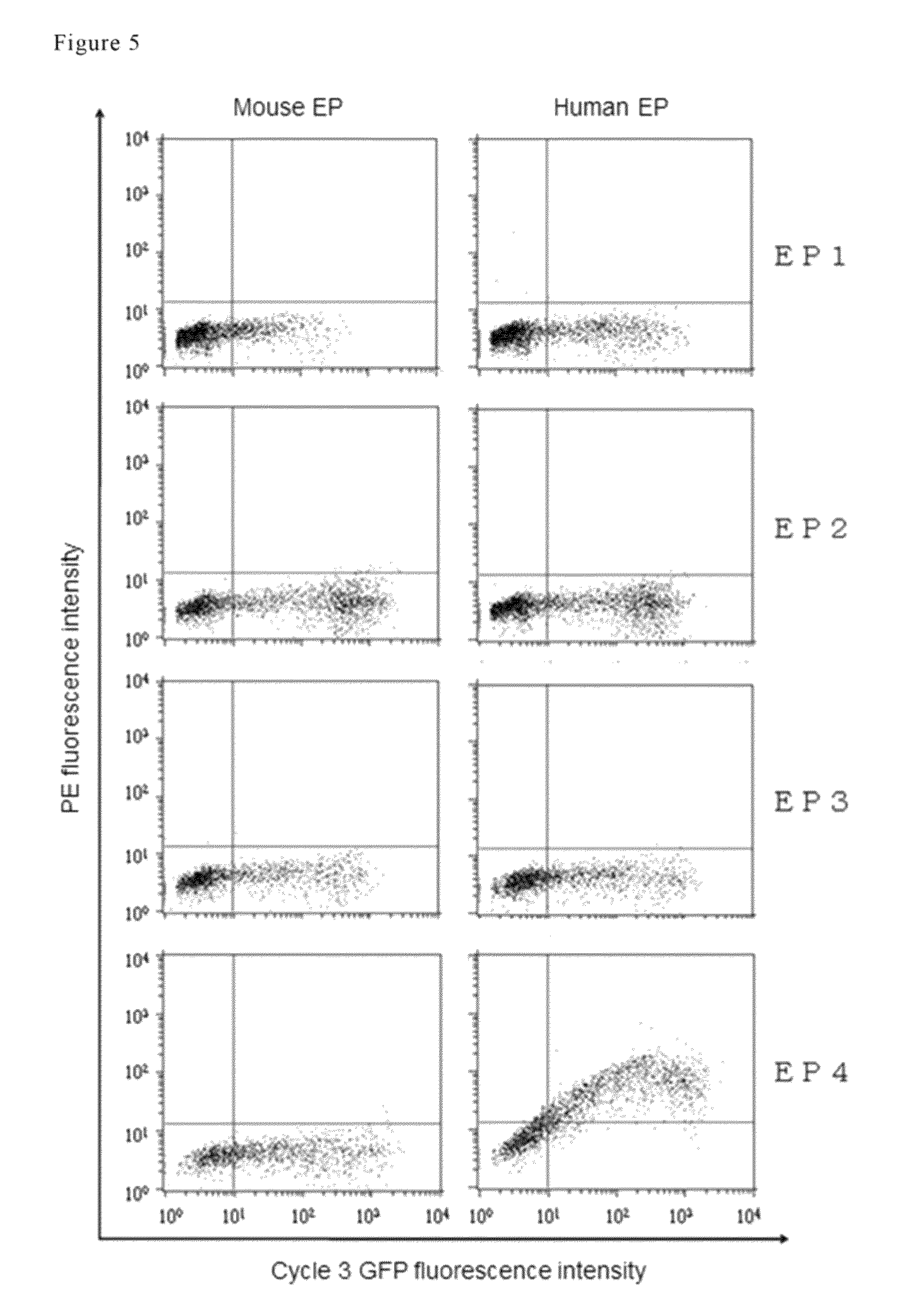Antibody against human prostaglandin E2 receptor EP4
a prostaglandin and receptor subtype technology, applied in the field of monoclonal antibodies against human prostaglandin e2 receptor subtype ep4, can solve the problems of insufficient therapeutic results, side effects such as nausea, vomiting, diarrhea, etc., and achieves the effect of suppressing the function of ep4, fewer side effects, and higher binding selectivity
- Summary
- Abstract
- Description
- Claims
- Application Information
AI Technical Summary
Benefits of technology
Problems solved by technology
Method used
Image
Examples
examples
(1) Production of Human EP4 Expression Vector pcDNA-DEST40-hEP4
[0110]The sequence 5′-GGGGACAAGTTTGTACAAAAAAGCAGGCTTCGAAGGAGATAGAACC ATGGAGACAGACACACTCCTGCTATGGGTACTGCTGCTCTGGGTTCC AGGTTCCACTGGTGAC-3′ (SEQ ID NO: 30) was added to the 5′-terminus of a sequence, which had been prepared by removing a stop codon from the ORF sequence of the human EP4 gene registered in Genbank (Accession No. NM—000958), and the sequence 5′-GACCCAGCTTTCTTGTACAAAGTGGTCCCC-3′ (SEQ ID NO: 31) was added to the 3′-terminus thereof, thereby synthesizing DNA. Using Gateway System (Invitrogen), the thus synthesized DNA was incorporated into a pDONR221 vector (manufactured by Invitrogen), so as to prepare pDONR-hEP4. The nucleotide sequence of the insert was determined according to an ordinary method, and it was confirmed that the sequence included no errors. Subsequently, using Gateway System, the sequence containing the human EP4 gene was incorporated into the pcDNA-DEST40 vector (manufactured by Invitrogen) to ...
PUM
| Property | Measurement | Unit |
|---|---|---|
| concentration | aaaaa | aaaaa |
| concentration | aaaaa | aaaaa |
| weight | aaaaa | aaaaa |
Abstract
Description
Claims
Application Information
 Login to View More
Login to View More - R&D
- Intellectual Property
- Life Sciences
- Materials
- Tech Scout
- Unparalleled Data Quality
- Higher Quality Content
- 60% Fewer Hallucinations
Browse by: Latest US Patents, China's latest patents, Technical Efficacy Thesaurus, Application Domain, Technology Topic, Popular Technical Reports.
© 2025 PatSnap. All rights reserved.Legal|Privacy policy|Modern Slavery Act Transparency Statement|Sitemap|About US| Contact US: help@patsnap.com



